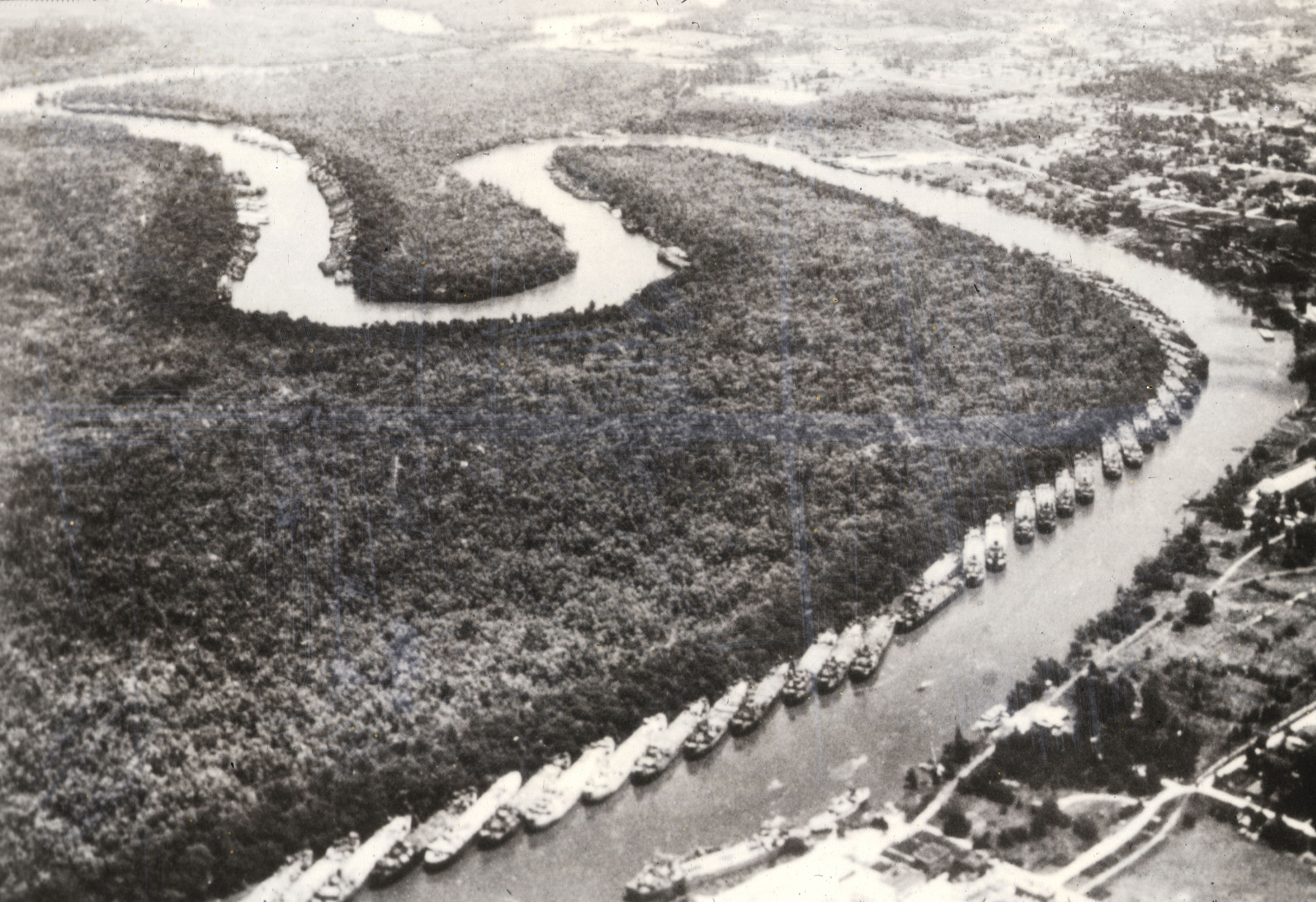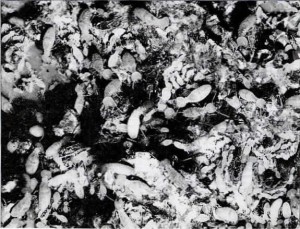SciTech Tuesday: Invasive Species

Ships returning from the Pacific theater after WWII lining the Calcasieu River near Lake Charles, Louisiana, a probable source of initial infestations by the Formosan subterranean termite. Photo, USDA.
It’s the dog days of summer, a time when unwanted weeds grow like wildfire and pests abound. Today introduced plant and animal species are commonplace, from shipping produce across continents to exotic aquarium fish at a local pet store. Opportunities for encountering exotic species were once limited by available transportation, generally carried to a new home on slow-moving ships. World War II brought increased opportunity for introduced and often unwanted species. Some transplanted flora and fauna became invasive, out-competing and sometimes decimating native species, an unintended consequence of war fought on a global scale.

Brown tree snake (Boiga irregularis). Photo, U.S. Fish and Wildlife.
As troops and cargo were transported across oceans, uninvited guests often hitched a ride. Consider the effect of the brown tree snake on the island of Guam. Native to Australia and Papua New Guinea, the brown tree snake is a nocturnal predator, feeding on birds, lizards, and small mammals in its native habitat. It was most likely transported as a stowaway in ship cargo from the South Pacific to Guam shortly after World War II. Once on Guam, the venomous reptile became the only predator in a fragile island ecosystem decimating most of the native bird species, endangering residents, and even causing electrical outages by climbing onto power lines. Today outbound planes and ships are searched thoroughly to reduce the threat to other regions, specifically Hawaii and the mainland United States.

Formosan subterranean termite (Coptotermes formosanus) colony. Photo, University of Hawaii.
Here in New Orleans, the Formosan subterranean termite threatens historic structures and damages native trees. Introduced through wood shipping containers returning post-war, the termite native to Southern China, Taiwan, and Japan has established itself through much of the South along with California and Hawaii. This “supertermite” is extremely destructive because of its large colony size and ability to consume wood at an alarming rate. During early summer evenings, winged adults swarm while seeking a mate to establish a new nest. Because of their extensive underground colonies, Formosan termites are rarely eradicated from an area once established.
Post by Annie Tête, STEM Education Coordinator




Leave a Reply